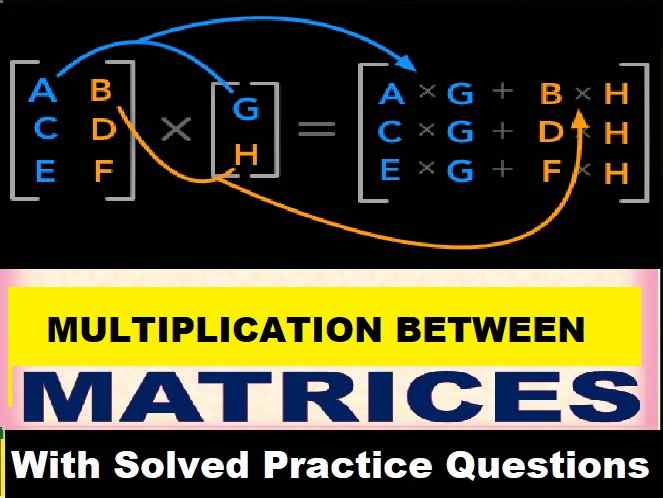Transportation Of Food And Minerals In Plants Class-8th Goyal Brothers ICSE Biology Solutions Chapter-1 Transportation Of Food And Minerals In Plants. We Provide Step by Step Answers of Objectives, Fill in the blanks , Definitions , Match the followings and Short/Long Question Type answers of Chapter-1, Unit 1, Transportation in plants. Visit official Website CISCE for detail information about ICSE Board Class-8
Transportation Of Food And Minerals In Plants
ICSE Class-8th Goyal Brothers Biology Solutions Chapter-1
| Board | ICSE |
| Class | 8th |
| Subject | Biology |
| Book Name | Goyal Brothers |
| Chapter-1 | Transportation Of Food And Minerals In Plants |
| Unit-1 | Transportation in plants |
| Topic | Solution of exercise questions |
| Session | 2023-24 |
Transportation Of Food And Minerals In Plants
ICSE Class-8th Goyal Brothers
I. Multiple Choice Questions. Tick the correct choice.
1. Movement of water in the plant body takes place through
(a) Xylem
(b) Vascular Tissues
(c) Phloem
(d) Stomata
ANS:(a) Xylem
2. Prepared food material is carried through
(a) Xylem
(b) Vascular Tissues
(c) Phloem
(d) Stomata
ANS:(c) Phloem
3. Water from the soil enters the root xylem by the process
(a) Diffusion
(b) Evaporation
(c) Osmosis
(d) Transpiration
ANS:(c) Osmosis
4. The loss of water through the stomata of leaves is called
(a) Transpiration
(b) Wilting
(c) Evaporation
(d) Osmosis
ANS:(a) Transpiration
II. Fill In The Blanks
1. Water passes into a root by the process called _Osmosis_.
2. Osmosis occurs through a _Semi-permeable_ membrane.
3. Movement of water occurs from a _ less concentrated_ solution into a _ more concentrated_ solution in osmosis.
4. Water is lost from the leaves by _Transpiration_.
5. Upward movement of water takes place through _Xylem_.
III. Which of the following statements are true(T) and which ones are false(F)? Mark T or F :
1. In Spirogyra, transport of materials takes place through osmosis. [F]
2. Xylem and phloem are vascular tissues. [T]
3. ‘Girdling experiment’ demonstrates food synthesis in plants. [T]
IV. Define the Following :
- Osmosis: It is a movement of solvent(such as water) from a region of higher concentration to the region of lower concentration through a semi-permeable membrane. It helps regulate the flow of water in and out of cell.
- Transpiration: It is the process by which water is lost as water vapor from the aerial parts of the plants i.e. from the surface of the leaves.
- Transpiration Stream: It allows water to travel from the root up the stem to the leaves. In the leaves water forms the raw material for photosynthesis.
- Diffusion: It is the major method by which transport of material occurs in single celled organism. It is the movement of molecules – gas, liquid, and solid from their higher concentration to their lower concentration until they are spread out evenly.
- Root pressure: It is a pressure under which water moves from the living cells of a root into the xylem. It is also called as osmotic pressure.
- Active transport: Movement of molecules across a semipermeable membrane against a concentration gradient using energy is called active transport.
- Chlorosis: It is the condition in plants where yellowing of leaves are caused by a lack of chlorophyll. It mainly happens due to a lack of nutrients to synthesize sufficient chlorophyll.
V. Describe the functions of the following :
1. Xylem: It is a type of vascular tissue present in plants, which primarily transports water, dissolved nutrients and mineral salts from the roots up the stem to the leaves.
Functions:
- The main functions of xylem is conduction of water and minerals from the roots to different parts of the plant body.
- Tracheids and xylem fibres provide mechanical support.
- Xylem parenchyma helps in storage of starch and other materials.
2. Phloem: It carries dissolved food that are prepared by the leaves to the different parts of the plants.
Functions:
- The main functions is to conduct food material from the leaves to the other regions of plants and also to storage organs.
- Phloem parenchyma helps in storage of organic matter.
- Phloem fibres provide mechanical support.
VI. Answer the following questions :
Question 1:- Name the two aspects of transport in higher plants.
Answers:- Xylem and Phloem are the two aspects of transport in higher plants. Xylem transports water and minerals. Phloem transports sugars and amino acids dissolved in water.
Question 2:- How does transport of materials take place in unicellular plants?
Answers:- In unicellular plants transport of material takes place by a process called diffusion.
Question 3:- What are root hair? Mention the functions performed by the root hair.
Answers:- Root hair are unicellular microscopic hair like structures present behind the tip of the root.
The functions of the root hair :
- Anchors (or fix) the plant to the soil.
- to absorb water and mineral salts from the soil.
Question 4:- How does movement and absorption of water take place through the roots?
Answers:- Osmosis is the process by which the movement and absorption of water take place through the roots. In this process water molecules move from a weaker solution to a stronger solution through a partially permeable membrane. It can also be defined as the movement of water molecules through a semipermeable membrane from an area of its higher concentration to an area of its lower concentration.
Question 5:- Name the process by which water loss takes place through the leaves.
Answer:- Transpiration is the loss of water in the form of vapour from the leaves to the atmosphere.
Question 6:- Mention the significance of transpiration.
Answer:- The significance or the importance of transpiration are:-
- It results in the transpiration of water and minerals from the soil to the leaves. In the leaves, water forms the raw material for photosynthesis.
- It produces a cooling effect which helps in preventing hot sunlight from damaging delicate cells.
Question 7:- Differentiate between
- Osmosis and Transpiration
- Micronutrients and Macronutrients
Answers:- Difference between Osmosis and Transpiration.
- Osmosis and Transpiration: Osmosis is a process by which molecules of a solvent tend to pass through a semipermeable membrane from an area of its higher concentration to an area of its lower concentration whereas Transpiration is the loss of maximum water present in the plants through the stomata of leaves.
- Difference between Micronutrients and Macronutrients
|
Macronutrients |
Micronutrients |
|
Macronutrients occur in large quantities in plants. |
Micronutrients occur in small quantities in plants |
|
It is needed for making proteins and nucleic acid. |
It is needed for nitrogen fixation. |
|
These compounds are present in an excessive concentration in plants. |
Micronutrients are present in low concentrations in plants as compared to macronutrients. |
|
Deficiency of micronutrients can result in marasmus, kwashiorkor, etc |
Deficiency of micronutrients generally results in Scurvy, anemia, goiter, etc. |
|
Examples of macronutrients are protein, fiber, water, fats, carbohydrates, etc |
Examples of micronutrients include minerals, vitamins, Iron Calcium, etc |
— : end of Transportation Of Food And Minerals In Plants Goyal Brothers:–
Return to- ICSE Class -8 Goyal Brothers Biology Solutions
Thanks
Please share with yours friends if you find it helpful.


